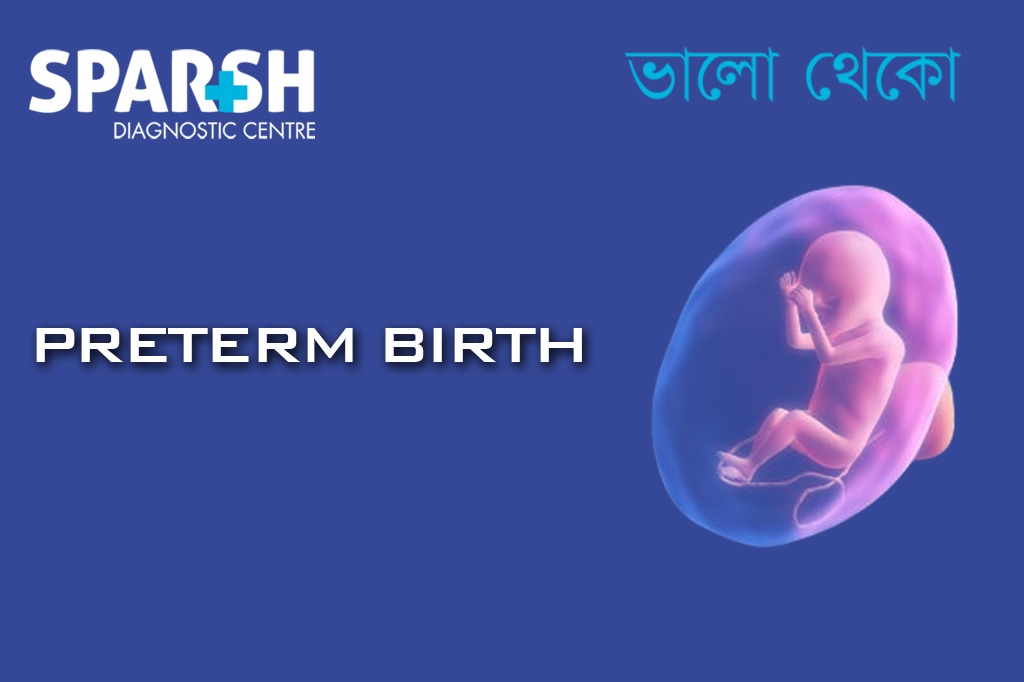Pregnancy is expected to last about 40 weeks, giving the baby enough time to grow and develop inside the womb. However, not all pregnancies reach full term. When a baby is born before 37 completed weeks of gestation, it is considered a preterm birth. Preterm births are a significant global health concern, as they are one of the leading causes of newborn illnesses and infant mortality.
According to the World Health Organization (WHO), an estimated 13.4 million babies are born preterm each year, and complications from preterm birth account for nearly 900,000 deaths annually. Even if the babies survive, many face lifelong challenges, such as breathing problems, developmental delays, and learning difficulties.
This blog explores the causes, role of genetics, symptoms, risks, diagnosis, treatment, and prevention of preterm birth, helping families better understand this condition and take steps toward safer pregnancies.
What is Preterm Birth?
Preterm birth is defined as the delivery of a baby before completing 37 weeks of pregnancy. Based on gestational age, it is further classified into:
Extremely preterm: Before 28 weeks
Very preterm: 28 to <32 weeks
Moderate to late preterm: 32 to <37 weeks
The earlier a baby is born, the higher the chances of medical complications.
Causes of Preterm Birth
Preterm birth is usually the result of multiple factors, which can be either medical, environmental, or genetic. Some common causes include:
1. Genetic Factors
Research shows that genetics can influence the risk of preterm birth. Some families may have a hereditary tendency, where genes linked to immune responses, hormonal regulation, and uterine function increase susceptibility.
2. Infections and Inflammation
Maternal infections, particularly in the urinary tract, amniotic fluid, or reproductive system, can trigger inflammation, which weakens the fetal membranes and induces early labor.
3. Maternal-Fetal Tolerance Breakdown
Normally, the mother’s immune system adapts to tolerate the growing fetus. When this balance is disrupted, it can lead to early labor.
4. Vascular Disorders
Conditions such as preeclampsia, high blood pressure, or placental abnormalities can reduce blood flow to the baby, resulting in preterm delivery.
5. Uterine Defects or Overdistension
Problems like uterine malformations, fibroids, or multiple pregnancies (twins, triplets) can cause the uterus to overstretch and trigger preterm contractions.
6. Hormonal Changes
Low levels of progesterone or an imbalance in stress hormones (hypothalamus-pituitary-adrenal axis) can play a role in early labor.
7. Cervical Insufficiency
When the cervix weakens and dilates too early, it cannot hold the pregnancy until full term, leading to premature birth.
8. Stress and Lifestyle Factors
High levels of stress, smoking, alcohol, substance abuse, or poor nutrition may contribute to preterm delivery.
9. Unknown Causes
In many cases, the exact cause remains unclear despite extensive evaluation.

Risk Factors for Preterm Birth
Certain women are at higher risk of delivering prematurely. Common risk factors include:
Previous preterm birth
Multiple pregnancy (twins, triplets)
Maternal age <17 or >35 years
Short interval between pregnancies
Chronic conditions (diabetes, hypertension, thyroid disorders)
Vaginal bleeding during pregnancy
Low maternal weight or poor nutrition
High stress levels
Infections during pregnancy
Signs and Symptoms of Preterm Labor
Recognizing early warning signs is crucial to prevent complications. Common symptoms of preterm labor include:
Regular contractions before 37 weeks
Pelvic or lower abdominal pressure
Vaginal spotting or bleeding
Increased vaginal discharge
Fluid leakage (possible water breaking)
Dull backache
Abdominal cramping similar to menstrual pain
If you experience these symptoms, immediate medical attention is necessary.
Complications of Preterm Birth
The earlier a baby is born, the higher the risks of complications. Some common health problems include:
Short-Term Complications:
Breathing difficulties (due to underdeveloped lungs)
Heart problems (patent ductus arteriosus, low blood pressure)
Brain bleeding (intraventricular hemorrhage)
Temperature regulation issues
Feeding difficulties
Increased risk of infections
Long-Term Complications:
Vision and hearing problems
Developmental delays
Learning difficulties
Behavioral issues
Increased risk of chronic conditions such as diabetes and hypertension later in life
Role of Genetics in Preterm Birth
Genetics play a key role in determining the likelihood of preterm birth. Research highlights several mechanisms:
Maternal Genetic Influence: Variants in genes regulating uterine contractions, cervical strength, and immune response may predispose women to preterm birth.
Fetal Genetic Factors: Certain fetal genes can influence growth and trigger early labor.
Ethnic and Familial Trends: Some ethnic groups show higher rates of preterm birth, suggesting hereditary influence.
Gene-Environment Interaction: Genetic predisposition combined with environmental stressors (like infections, smoking, or malnutrition) further raises the risk.
Understanding these genetic factors can help in early risk prediction and preventive care.
Diagnosis of Preterm Birth
Doctors use a combination of history, examination, and investigations to diagnose preterm labor. Common diagnostic methods include:
Pelvic examination to check cervical changes
Ultrasound scan to measure cervical length and monitor fetal growth
Fetal fibronectin test (a protein indicating risk of preterm labor)
Amniocentesis in some cases to detect infections
Blood and urine tests to check for infections or hormonal imbalances
Treatment and Management of Preterm Birth
While preterm labor cannot always be prevented, medical care can help prolong pregnancy or reduce complications. Treatments include:
1. Medications
Tocolytics: Delay contractions to allow time for fetal lung maturity
Corticosteroids: Help mature the baby’s lungs and reduce breathing problems
Antibiotics: Treat underlying infections
Progesterone supplements: Reduce the risk in high-risk women
2. Cervical Cerclage
A surgical procedure where stitches are placed in the cervix to keep it closed until full term.
3. Lifestyle Modifications
Adequate rest
Stress reduction techniques
Nutritious diet
Avoiding smoking, alcohol, and harmful substances
4. Neonatal Care
Premature babies often require specialized neonatal intensive care (NICU) for breathing support, feeding assistance, and temperature regulation.
Prevention of Preterm Birth
Although not all preterm births can be prevented, certain steps reduce the risk:
Regular prenatal check-ups
Treating infections promptly
Managing chronic diseases (like hypertension and diabetes)
Maintaining a healthy diet and weight
Avoiding harmful substances
Taking prescribed supplements (folic acid, iron, calcium)
Spacing pregnancies by at least 18 months
Reducing stress and getting emotional support
How Sparsh Diagnostic Centre Can Help
At Sparsh Diagnostic Centre, we provide advanced diagnostic and prenatal care services to monitor high-risk pregnancies. Our team of specialists helps detect early warning signs of preterm labor and ensures timely medical intervention. With state-of-the-art facilities, we support both mothers and babies for healthier outcomes.
Frequently Asked Questions (FAQs)
1. What week is considered preterm birth?
Any birth that occurs before 37 completed weeks of pregnancy is considered preterm.
2. Can stress cause preterm birth?
Yes, high stress levels can trigger hormonal changes that may lead to preterm labor.
3. Is preterm birth genetic?
Genetics play a role, but it usually results from a combination of genetic, medical, and environmental factors.
4. Can preterm birth be prevented?
Not all cases can be prevented, but regular prenatal care, healthy lifestyle, and treatment of medical conditions can lower the risk.
5. What complications can preterm babies face?
They may face breathing issues, feeding problems, infections, developmental delays, and long-term health risks.
6. What treatment options are available for preterm labor?
Doctors may prescribe medications, progesterone supplements, or perform cervical cerclage. Babies born preterm may need NICU care.
7. How common is preterm birth?
Globally, about 1 in 10 babies is born prematurely each year.
Preterm birth is a complex condition influenced by multiple factors, including genetics, infections, maternal health, stress, and lifestyle habits. While it poses serious health risks to babies, early diagnosis, advanced treatment, and preventive strategies can significantly improve outcomes.
If you or your loved ones are pregnant and concerned about the risk of preterm birth, consult specialists at Sparsh Diagnostic Centre for comprehensive prenatal care and advanced diagnostic services.
For more information and appointments, visit: Sparsh Diagnostic Centre
#BhaloTheko
Disclaimer:
No content on this site, regardless of date, should ever be used as a substitute for direct medical advice from your doctor or other qualified clinician.

![]()






[…] during pregnancy or delivery—such as lack of oxygen, premature birth, or neonatal infections—can interfere with brain development and increase the risk of seizures […]
[…] chances of preterm birth, low birth weight, or growth […]
[…] preterm delivery is expected (before 37 weeks), corticosteroids may be given to accelerate fetal lung […]
[…] as dilation or effacement (thinning). If not managed appropriately, preterm labour may result in preterm birth, which is one of the leading causes of neonatal morbidity and mortality […]
[…] Preterm birth […]